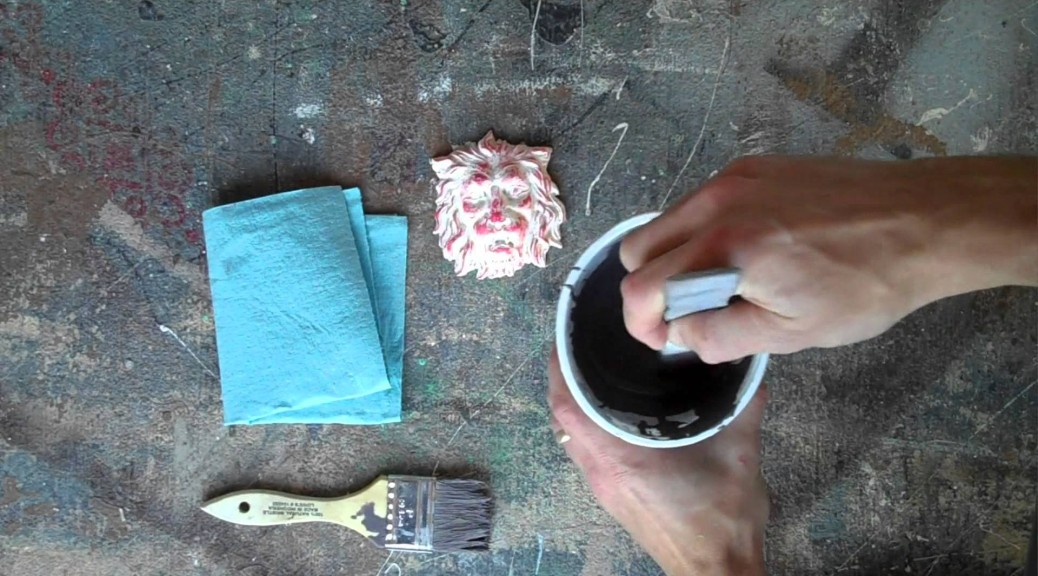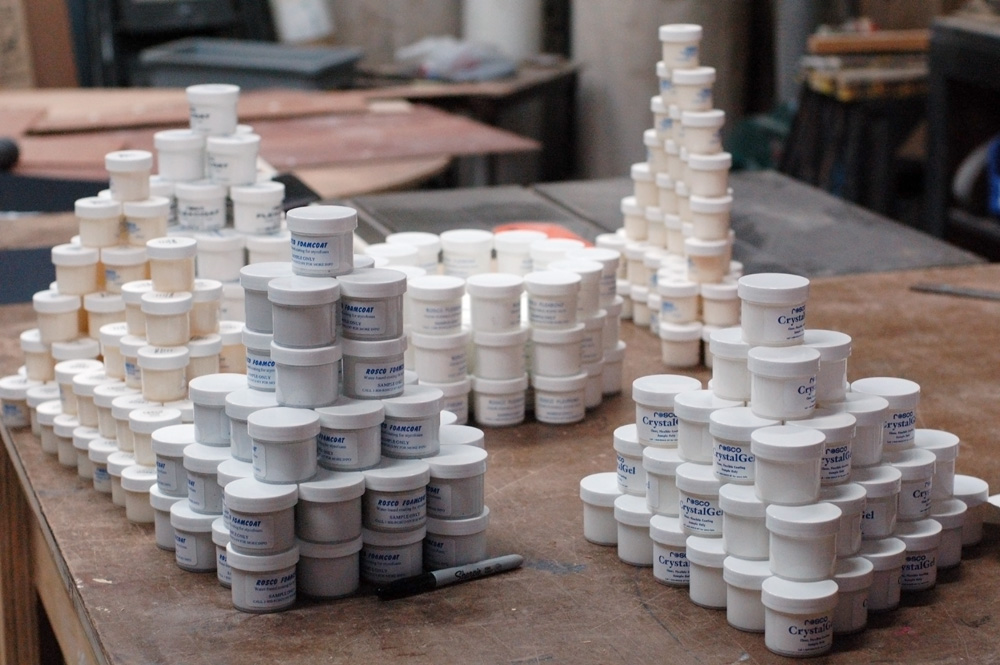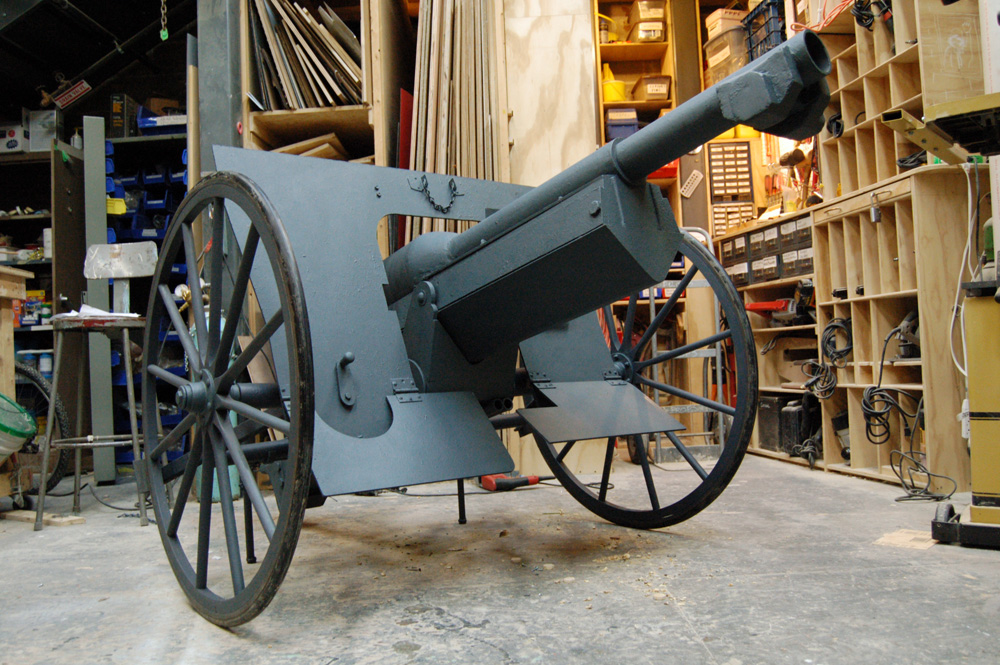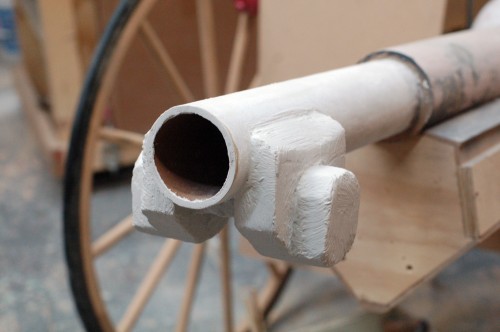This week I’ve added three videos to the Prop Building Guidebook’s companion video page. They are all shorter than previous videos and each involves a common technique for painting props. I shot a video for wet blending, dry brushing and glazes. You can watch the video on dry brushing below, watch the individual videos on YouTube by clicking the previous links, or check out all my videos by heading to the companion video page. See, I’m all about providing options.
Tag Archives: painting
Elevenses Links
Happy October 29th! Or for those of you on the Gregorian calendar, happy 11/11/11!
From Ryan Voss comes this fantastic-looking blood recipe based off of Crayola washable markers. They said they used it in a production where a character in a white wedding dress was covered in blood every night. (h/t to Propnomicon)
So Field & Stream, of all places, has a behind-the-scenes look at the props of AMC’s upcoming western show, Hell on Wheels. They focus a lot on the guns used and how they achieved the many gun effects in the show, but be sure to make it to the bottom of the article, where they have a video on building an entire train. That’s right, an historically-accurate steam locomotive made of styrofoam, wood and a fog machine. I thought my cannon was cool, but this is simply amazing.
You’ve seen some of this before on my blog, but Rosco shared a more in-depth look at how we made the portraits for Bloody Bloody Andrew Jackson.
This looks strange and promising. Autodesk has a free preview of their 123D Make software, which will turn a 3D computer file into something you can print out, cut apart, and assemble into a three-dimensional object. They have a video which does a better job explaining it. The software is only available for Mac, and it is only free until February, so if anyone with a Mac tries it out, let me know how it goes.
Mantle Studios has a very well-made tutorial on sculpting with wax. I’ve done a bit of wax sculpting, but nothing approaching the level of detail in this tutorial.
Props Summit Tonight, and Fun Links for the Weekend
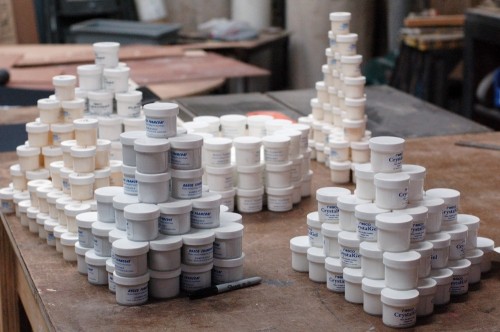
Still not sure whether you should come to the 3rd Annual Props Summit in New York City tonight? Even though we will have a guest speaker? What if I told you that you’ll get a gift bag filled with goodies? Jay Duckworth has been making some phone calls and sending some emails to get all sorts of cool prop stuff for everyone who shows up, from companies such as Rosco and Rose Brand.
As for those who can’t make it, here are some links to brighten your day:
Dave Lowe has a well done video showing a quick paint treatment to simulate rust. He uses just three paint colors and an old paintbrush.
Mr. Jalopy has a quick welding primer over at Make: Projects. It’s short and sweet, but has some nice photos.
Collector’s Weekly brings us this tour through a fake vomit factory. Not only do you see how this gag (get it?) is made, but you get the whole back story on its history (via Mark Frauenfelder).
Finally, here’s a brief anecdote about Michelangelo carving the David statue, illustrating one of the many ways to deal with a picky designer.
Cannon for Shakespeare in the Park
Last week, I showed the beginning stages of a French 75mm field gun I was building for this summer’s Shakespeare in the Park. You can see the construction of most of the structure in that post. Today I’ll continue with the addition of detail, painting and finishing touches.
Some Confusions in the World of Plastics
I’ve been researching the wide world of plastics for the book I’m working on. I’m trying to make sure my terminology is correct, and it’s proving daunting; plastics is a world where many terms can refer to the same thing, and common-use terms may not be technically correct. Add to the mix a bunch of trade names which are used generically, and you end up with one big confusing mess.
Take urethane rubber for instance. If you are into molding and casting you may have used it. “Urethane” in this case is a shortening of “polyurethane”, the same kind of plastic you use as a clear varnish among other things. “Urethane” is also a specific substance in the world of plastics; it is known as “ethyl carbamate”. Polyurethane does not contain ethyl carbamate, nor is it made from it.
Rubber can refer to a material or a substance. The substance, sometimes clarified as “natural rubber”, has historically been derived from the latex tree, though the proliferation of latex allergies has led to some companies experimenting with different plant sources. Synthetic rubbers, such as nitrile, do not contain latex; the “rubber” in their name refers to the fact that their properties mimic natural rubber. Technically, they are all referred to as “elastomers”.
Thus, “urethane rubber” contains neither urethane, nor rubber.
Speaking of latex, we all know and love latex paint for painting houses both inside and out. Sometimes we even use it to paint props. It does not actually contain any latex. It refers to paints which use plastics as their binders, such as acrylic, polyvinyl acrylic, styrene, etc. Vinyl resins are cheaper than acrylic resins, and most house paints contain a lot more vinyl than acrylic, which is why pure acrylic paint is a lot more expensive than house paint.
In case you are wondering, the acrylic in paint is the same acrylic found in sheet form, known commonly by trade names such as Plexiglas and Lucite. Crazy!

